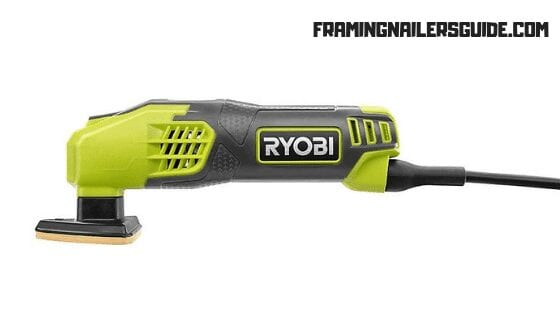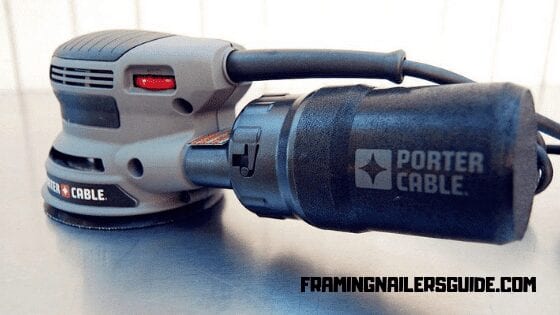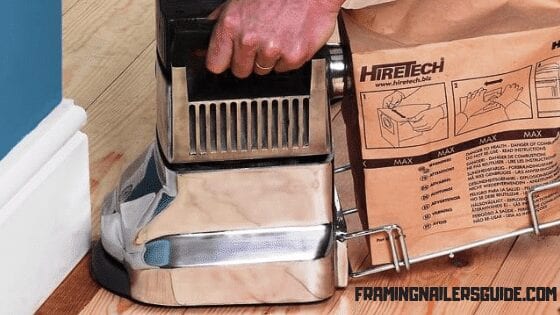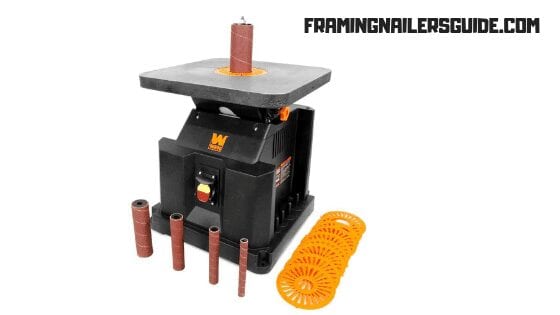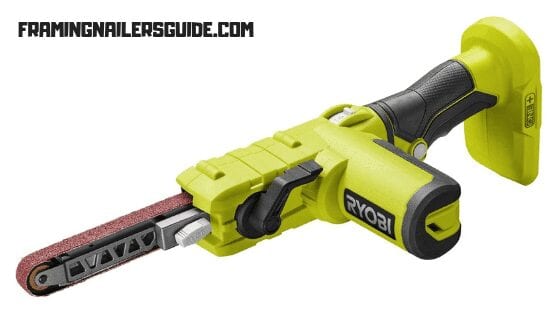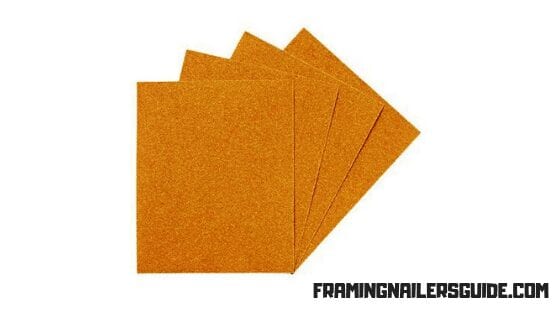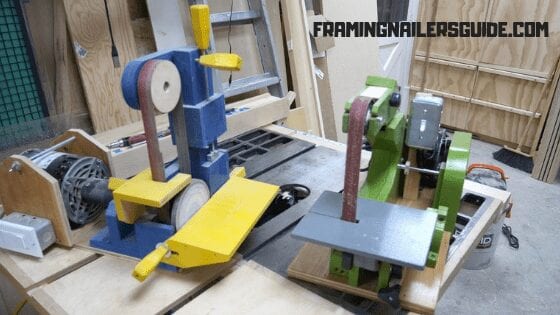
Table of Contents
FramingNailersGuide is reader-supported. If you buy an item through the links on this site, we may earn a small commission at no extra cost to you. Learn more
Last Updated on April 16, 2024 by John Patterson
In 2023 you have different types of sanders to make your sanding and polishing tasks more efficient.
Do you have to work on any wooden, metal, and even plastic projects?
Well, it can be industrial, craft, sculpture, and even hobbyist projects, if the answer is yes, that sanding is a task that you can’t avoid anyway. And when it comes to sanding, there are a handful of variations of the sanding tool.
In today’s article, we will take over and make the whole universe of sanding tools easily understandable to you. There are hand sanders, power sanders, and a wide variation of sanding manners as well that you have to go through while using these tools.
Sounds interesting, let’s proceed-
List of 21 Different Types of Sanders With Pictures in 2024
#1. Orbital Sander
The first type of sander is names an Orbital sander, and it takes abrasive sheets as a sanding medium. Usually, there is a pad that vibrates in small circles, and that’s what allows the user to sand in any direction. Whenever you would find a belt sander to be too powerful and aggressive, that’s where an orbital sander comes in.
To cover more area with an orbital sander, you can choose the half sheet version of it. In the case of more precise applications, there are quarter sheet versions as well.
#2. Random Orbital Sander
Random Orbital Sander is a type of orbital sander, which has almost a similar design to its parent type of sander. There is a round pad in place of the square one, and that’s the only difference between an orbital sander and a random orbital sander.
The job of that round part is to spin in circles in orbit. While it does that, there is a typical swirling pattern that doesn’t take place unlike it does in the case of orbital sanders.
The pad has its size variation starting from five to six inches. And the disc type can vary between a disc with a velcro surface or a disc with a pressure-sensitive adhesive. And that depends on the model.
No products found.
#3. Belt Sander
A belt sander is made by using a belt to wrap two drums, and the drums at the rear side are motorized. With the motorized rear drum, the front drum can move freely as the belts attach them.
Considering the belt sizing, there are four different sizes available for a sander-
3/18 inches: The smaller one, and the easier one to control.
3×21 inches: Contains a better balance, and good with the sanding speed as well. Most popular among all four.
3×24 inches: It’s quite hard to control, but can cover the right amount of area.
4×24 inches: The largest one, and the hardest one to manage. Meant to be used for professional uses only.
#4. Disc Sander
This type of sander is usually used as a power attachment for drilling machines. Apart from the portable version of the disc sander, there is a table-mounted version as well. It contains a round disk that can spin at a certain speed once you add it to the end of a drilling machine.
The mounted versions of disc sanders are with a wheel instead of a disc. As a benefit, you will get more surface area to work with, and a grit size variation would be more diverse with it.
However, as long as the rotational speed and the smoothness of the sanding operation are concerned, you can quickly go with the handheld, portable version. If more workforce is required, then the mounted one is preferable.
#5. Detail Sander
Details sander has a few other names such as mouse sander, corner sander, triangle sander, etc. You can see it be identical to an ironing machine that has a sander as well. Usually, it uses a triangular pad with self-adhesive sandpaper. That’s how the sanding goes on in this machine.
The size of this sander is tiny. So you get to work on complicated and narrow spaces with it. And to enhance its working ability, there are scopes to attach several attachments to it. With all of them combined, a detail sander is meant to be used in precise sanding works.
#6. Drywall Sander
The visual appearance of a drywall sander will more match with a metal detector. The reason is, there is a long pole that holds the disc sander on the end of it. Sometimes, the handle or pole is adjustable in terms of height to let the user look closely while working.
As the name suggests, you can understand that this sander is mostly used to and drywalls. In drywalls, there are often excess adhesives, and that’s what drywall sanders help you to do. Also, you can use drywall sanders on ceilings and other similar places, as well.
#7. Manual Sanding Block
Manual sanding blocks are another form of hand sanders, and it’s recommended for low-end sanding jobs. Mostly in repairing broken furniture pieces, drywall parts, edges, and corners, carpenters get to use manual sanding blocks.
The sandpaper grit that you’d find over here is quite medium, and the course is excellent. For adding diversity in usage, manual sanding blocks are available in both single angle and double angles.
Especially, when you are sanding tight spaces and narrow corners, you get to choose the right angle type from these two.
#8. Dustless Turbo Drywall Sander
As the name suggests, if you want your sanding work to be dust-free, then a turbo drywall sander is what you should rush after. It sands the drywall(especially attics and top surfaces), and the vacuum cup sucks the dust that’s produced meanwhile.
With the dust, the sand particles also enter into the vacuum cup. So, you don’t leave any dirt to clean up afterward.
It contains a sanding surface that is round, a rectangular head, and an air turbine. But the air turbine is not present in all of the dustless turbo drywall sander models.
#9. Portable Cable Sander
As long as you are a hobbyist homemaker and dealing with softcore sanding chores, you should not pick up a sanding device like the portable cable sander. But if you want the sanding job to be a bit aggressive and harsh, then it’s the right one to go for.
By structure, it contains a power cable to power the sander up, and it’s mostly used in sanding surfaces like ceiling, high walls, and so. With this in hand, you won’t be needing any ladder, as it comes with an extension of about 13 feet of more top.
#10. Orbital Drywall Sander
Another handheld sander, comes up with the ability to smoothly sand up surfaces like rusty walls, walls with paints on them, drywall with muddy compounds, etc. Being ideal for basic home improvement, you can make use of this sander in home improvement and DIY projects as well.
Unlike the sander mentioned above, it doesn’t come up with an extendable pole. So, you just need to use a ladder if you are thinking of sanding surfaces with it, which are located higher than your reach.
#11. Edging Sander
Edging sander is another member of the high-end sanding family. But compared to other heavy-duty sanders, the working speed is quite quick.
The benefit of an edging sander over a drum sander is, drum sanders can not reach narrow and shallow spaces where edging sanders can. Some examples are- stair surfaces, edges of the floor, etc.
However, like any high-end sander, you need to be careful to handle an edging sander, taking its high power sanding into consideration.
#12. Drum Sander
Drum sanders are one of the most influential members of the drum family. And it’s that heavy that you would require two people to carry it from one place to another.
However, drum sanders come up with quite a high sanding power, and if you don’t have the experience to work in high-end sanding, it can easily be misused in terms of sanding precision.
To use a drum sander, you have to push them forward, just what you would do with a lawnmower. And if the surface has to be removed from any paint, adhesives, or other similar substances, that’s where you get to use a drum sander.
#13. Table Sander
Table sanders can also be labeled as bench sander, as they both serve the same kind of purpose. These are not portable but stationary, and there is a belt sander that has a disc as well.
The power output in terms of sanding operation is quite high, and that’s what makes it convenient in large-scale sanding operations. Some of the examples where it is used are- woodworking shops, industrial factories, etc.
However, in case you are looking for precise sanding work, table sanders won’t be that great of a choice. But for removing a large amount of material quickly, this can be the right choice.
#14. Oscillating Spindle Sander
OSS or Oscillating Spindle Sander is a member of those types of sander family which comes up with some drum attachment. They call it the sanding drum, which will need to protrude from a freestanding table or a benchtop jointer maybe.
When you turn an OSS sander on, it will let the drum raise and spindle to lower. In this way, the wooden surface that you are working on will come up in contact with the entire sanding drum.
Sanding with an OSS sander is, therefore, a perfect choice if you want to avoid grooves. Also, as it has an even distribution, it can reduce the wear on the entire drum surface as well.
#15. File Sander
File sanders also come up with the name of finger sander because of the way it is used. There can be both air-powered and electrically powered. But both versions come up with a very narrow sanding belt. An advantage of such a thin belt is, it would fit in very small spaces as well.
So, as long as it’s about detailed working, you can make a perfect sanding operation done with the file sander. By complete work, we mean tasks like automotive body repairing, working on areas where it’s hard to reach with regular sanding machines, etc.
#16. Sand Paper
Sandpaper sheets are the first and the earliest member of the non-machinery sanding tools. Sometimes, electric sanders are quite fast, but not perfect for narrow and straightforward space sanding. That’s where the sandpapers come in.
The sandpaper is a simple piece of paper that is completely hand-powered. You will be provided with so much control on the sanding job, but the accuracy and working speed won’t be that much. Also, it can not remove much of the material at a time.
#17. Hand Sander
If you want to go for a better option than sanding papers, a hand sander would be a great option. It will not wear out your wrist, but still, you will manage to hand-sand and ample space without taking any help from machines.
Sometimes, all you want is accuracy in sanding, no matter how much time it takes to do. In that case, hand sanders are quite an excellent option to go with.
#18. Strip Sander
A modified version of hand sanders is the strip sanders. There are two holders for two hands, and two men from both ends of the sander can get easily with any sanding.
Mainly, strip sanders are used in sanding large pieces of wood, logs, or any similar surfaces. As long as manual sanding is considered, this one is considered to be one of the most convenient options.
#19. Bow Sander
It’s not all the time while you have to sand only dull surfaces only. Sometimes, there are contoured surfaces that require sanding, and that’s when a bow sander comes in place.
This sander will help you to sand on contoured edges with supreme precision and accuracy. You have to hold down the sander with one hand, and another hand should be used in holding the workpiece that you are working on. Usually, wooden craftworks are the ideal objects to work with a bow sander.
#20. Palm Sander
A palm sander is a miniature of power sanders, and it will fit right onto your palm. It’s designed to be quite comfortable to be held, and workpieces that you can work with it are usually small craft pieces or small surfaces.
After you are done with the necessary sanding, there comes the essence to put fine details on the job. And that’s when you get to use a palm sander in your hand.
#21. DIY toothbrush Sander
The name DIY toothbrush sander quite expresses the use of it anyway. Just all you have to do is to replace the bristle heads of the toothbrush with sandpapers.
Such a sander will help you to sand and smoothen surfaces like softwood, plastic, etc. up. Also, it will not wear out your hands, which you can not skip while doing it manually.
Orbital Sander vs Palm Sander
When it comes to a head-to-head comparison of different kinds of sanders, there comes the orbital sander and palm sander head-to-head. Both of the sanders are quite similar on the surface. But inaction, they have quite some differences with each other.
The orbital sander is more of a professional kind of sander where it does sanding on a larger scale on larger surfaces. On the other hand, palm sanders are quite a handy tool that does not require much expertise to use.
The area of use of orbital sander is for prepping and finishing. On the other hand, palm sanders are used on narrow surfaces when it’s imperative to achieve a smooth surface with 100% accuracy.
Belt Sander vs Orbital Sander
After comparing the orbital sanders with palm sanders, there comes another comparison of orbital sanders with belt sanders. Now, both of these sanders are quite different from each other in terms of structure and function.
You can make use of both of these sanders for finishing chores, the area and accuracy of purpose are quite different.
Belt sanders are usually used in large-scale finishing tasks, where orbital sanders are more up to mid-scale sanding chores. The sanding surface in the case of a belt sander is the sanding belts themselves.
On the other hand, the sanding surface of an orbital sander is the sanding dist. That makes quite some difference in the operating style of both of these sanders, as well.
In Conclusion
So, that had been the discussion on 21 different types of sanding tools and their functions. We know that we couldn’t focus on detailed tips on how to use each of them and what are the areas of usage.
But hopefully, the introductory speech on each sander of this list will help you to figure out more about the tool.
Finally, we expect that this discussion will make you put your hands on the right type of sanding tool that you need in any situation.
Good luck with that!





